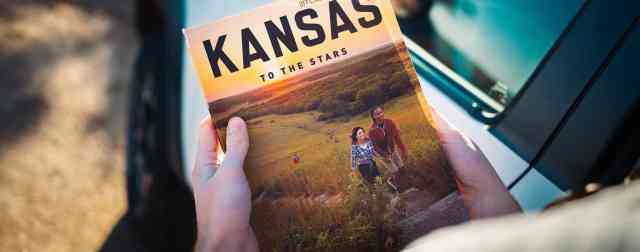Your browser is not supported for this experience.
We recommend using Chrome, Firefox, Edge, or Safari.
Post Rock Scenic Byway
The prairies of Kansas are filled with a quiet beauty, but our rolling hills are not naturally filled with timber-bearing trees. As this area began to transform into a haven for grazing cattle, ranchers looked to local natural resources for solutions to fencing needs. Thus, the icons of the Post Rock Scenic Byway were created. Many of these historic limestone post rocks remain as tributes to those that came before, and travelers will get to witness how history has begun to blend in with a quirky, artistic future.
Post Rock Byway Map
Things to do along the way
About the Byway
Locations
- K-232 & 203rd Rd (38.96881, -98.50249)
- Kansas Originals parking lot at I-70 & K-232 (38.85191, -98.46738)
- West of Czech Egg on US 40 (38.82419, -98.47301)
Driving Directions
Distance: 18 miles
Lucas to Wilson: Wilson: Begin at the intersection of K-18 and K-232 in Lucas, KS. Travel south on K-232 for 18 miles towards Wilson, KS, to check out the World’s Largest Czech Egg. Along the way, be sure to stop by Wilson State Park.
Wilson to Lucas: Access the byway from I-70, exit 206, and take K-232 south 2 miles to Wilson, KS, to check out the World’s Largest Czech Egg. Retrace the route back to I-70 and continue north on K-232 for 16 miles to Lucas, KS. Along the way, be sure to stop by Wilson State Park.
Wilson State Park
Nearly half of the Post Rock byway runs adjacent to Wilson Lake. This incredibly scenic area is full of recreational activities and local hotspots. Perhaps best known for its Switchgrass Moutain Biking Trail, this state park gives adventure seeks a whole new perspective on what Kansas has to offer.
Wilson
Terms like “world-class” and “one of the nation’s best” are usually unwarranted. Both are accurate for Wilson State Park.
Byway Gallery
Kansas Byways
Kansas Route 66
Kansas' Historic Route 66 Byway offers opportunities for visitors to enjoy a variety of experiences to "get their own kicks…
Native Stone
Discover the natural beauty of the panoramic Native Stone Scenic Byway.
Western Vistas
Visit a rugged landscape on the culturally and visually fascinating route known as the Western Vistas Historic Byway.
Prairie Trail
When you travel the Prairie Trail Scenic Byway, you follow in the steps of Native Americans, explorers and pioneers as they sought food…
Gypsum Hills
Ancient floodplains, buttes, canyons, mesas and sinkholes are rare on the Great Plains. Yet, nestled in the Kansas grasslands is the Gypsum…
Frontier Military
Travel through time, visiting multiple forts along the Frontier Military Historic Byway. Originally built to move soldiers and…
Land & Sky
Travelers along the Land and Sky Scenic Byway have the opportunity to experience the Wallace Branch of the Great Western Cattle Trail, scale…
Wetlands & Wildlife
Along the byway, you'll encounter landscapes and communities shaped by the powerful forces of motion and change. You're entering a…
Glacial Hills
The Glacial Hills Scenic Byway gets its name from the rolling hills and rock-strewn valleys carved by ancient glaciers.
Smoky Valley
Named for their hazy, blue appearance at sunrise and sunset, the Smoky Hills divide the more easterly mixed-grass prairie from the…
Flint Hills
The Flint Hills National Scenic Byway offers incredible views of the native grasses and flowers of the tallgrass prairie - one of the last…
For more information about the Post Rock Scenic Byway, contact:
Lucas Area Chamber of Commerce postrockscenicbyway@gmail.com 785-525-6288





















